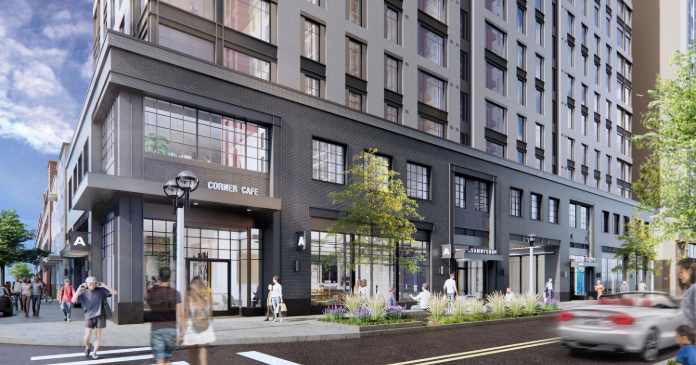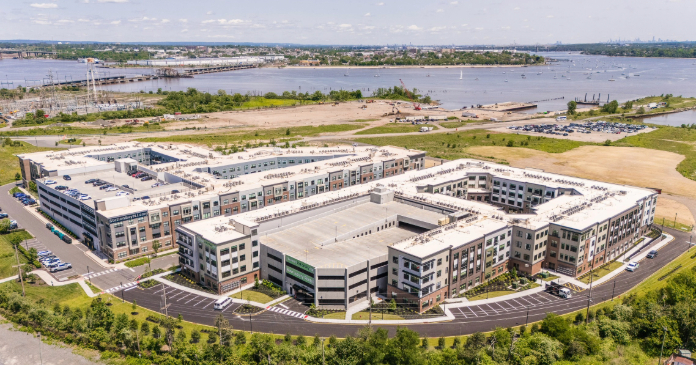WOMEN MORE COMMITTED TO ENTREPRENEURSHIP
Women entrepreneurs, 26.6 percent, are more likely than their male counterparts, 17 percent, to stick with their self-employment plan even if a desirable job opportunity comes along, according to the National Association for the Self-Employed.
FOX LEADS NETWORKS IN SUPPLIER DIVERSITY SPENDING
According to the NAACP’s 2003 TV Diversity Report, FOX spent $18.9 million with diverse suppliers in the 2002 fiscal year. NBC spent $13.9 million, while ABC spent $9.1 million. (CBS did not report minority- procurement data.)
ASIAN AMERICAN POPULATION: SLOW BUT GROWTH INCREASE
Asian Americans, 4.5 percent of the U.S. population in 2002, are expected to comprise of 5.1 percent of the population by 2010 and 5.6 percent of the population by 2015, according to U.S. Census bureau projections.
LATINOS THE MOST LIKELY ENTREPRENEURS
In 1997, the last year for which numbers are available, Latinos accounted for 39 percent of all minority-owned businesses, Asian Americans accounted for 30 percent and African Americans accounted for 27 percent, according to the U.S. Census Bureau.
NEARLY HALF OF AMERICANS SPEAK FOREIGN LANGUAGE AT HOME
Forty-seven million U.S. residents above the age of four speak a language other than English at home, according to the U.S. Census Bureau. About one in five Americans (17.9 percent of the population) over age five spoke a foreign language at home in 2000, according to the U.S. Census. Eleven percent of U.S. residents age five and older, or about 28 million people, speak Spanish at home, up from 8 percent in 1990, or about 17 million according to the 2000 U.S. Census. And among those Spanish-speakers in 2000, roughly half spoke English less than “very well,” about the same percentage as a decade earlier.
FOREIGN-BORN ASIANS MORE LIKELY TO OWN HOMES
Seventy percent of Asian-American naturalized citizens own homes, compared with 57 percent of those born in the United States, according to the U.S. Census Bureau.
MORE IMMIGRANTS OWNING HOMES
The home-ownership rate for non-citizen immigrants was 35 percent in 2002, about 2 percent higher than in 1994, according to the U.S. Census Bureau. The home-ownership rate for naturalized U.S. citizens remained pretty constant at 68 percent during this eight-year period.
AFRICAN AMERICAN WEALTH GROWING
While African-American households accounted for only 1.3 percent of households making more than $100,000 in 1980 (in constant dollars), they accounted for 6.1 percent of households earning that in 2000, according to the U.S. Census Bureau.
FOREIGN-BORN LATINOS MORE LIKELY TO OWN HOMES
Naturalized Latino citizens have a 63 percent home-ownership rate, while U.S.-born Latinos have a 54 percent home-ownership rate, according to the U.S. Census Bureau.
LATINO SPENDING POWER: MORE THAN $1 TRILLION BY 2008
Latino buying power, $653 billion in 2003, is expected to reach $1,014.2 billion in 2008. By 2008, Latinos are expected to account for 9.6 percent of the nation’s buying power, up from 5.2 percent in 1990.
ADA AWARENESS DROPS, EVEN AMONG THOSE WITH DISABILITIES
Fifty-eight percent of adults have seen, heard or read about the Americans with Disabilities Act (ADA), according to Harris Interactive. This is down 58 percent from 1999. Awareness is down among people with disabilities as well. In 2003, 48 percent of people with disabilities had heard of the ADA, a drop from 63 percent in 1999.
GLBT EMPLOYEES MORE COMFORTABLE BEING ‘OUT’ AT WORK
Forty-eight percent of gays and lesbians said they would be very or extremely comfortable displaying a photo of a same-sex spouse, partner or significant other at work in 2003, according to Harris Interactive and Witeck-Combs Communications. In 2002, just 24 percent expressed this level of comfort.
HOME-OWNERSHIP RISES FASTER AMONG YOUNG AFRICAN AMERICANS, LATINOS
Home-ownership rates for both African Americans and Latinos ages 25 to 34 increased 4 percentage points in the 1990s, substantially more than the 1.9 percentage point gain experienced by whites in the same age group, according to a University of Southern California analysis of U.S. Census data.
32 MILLION WORKING AGE PEOPLE WITH DISABILITIES
There are approximately 32 million working-age people with disabilities in the United States, according to the U.S. Census Bureau.
AFRICAN AMERICAN WEALTH UP 221 PERCENT
The net wealth of the typical African-American household increased 221 percent from $5,919 in 1989 to $19,010 in 2001, according to the Consumer Federation of America’s analysis of Federal Reserve data. This is significantly greater than the 33 percent increase for all households during the same period.
ACCEPTANCE OF HOMOSEXUALITY GROWS STEADILY
In 1982, 34 percent of Americans felt homosexuality was an acceptable lifestyle, according to the Gallup Organization. By 2001, that percentage had increased to 52 percent.
MOST PEOPLE WITH DISABILITIES ARE MOBILE
More than 75% of people with disabilities dine out at least once per week, according to Open Doors Organization.
NORTHEAST LOSING WHITE POPULATION
While 832,000 whites left the Northeast United States for another part of the country between 1995 to 2000, 490,000 white immigrants arrived in the Northeast, according to the U.S. Census Bureau.
ASIAN AMERICANS, WHITES HOLD MOST CREDIT CARDS
Asian Americans, 80 percent, and whites, 70 percent, say they have between one and nine credit cards, compared with 59 percent of African Americans and 48 percent of Latinos who claim to have as many, according to Market Segment Research. Fifty-one percent of Latinos report having no credit cards, compared with 38 percent of African Americans, 25 percent of whites and 11 percent of Asian Americans.
FEW LATINO INTERNET USERS ARE SPANISH DOMINANT
Eighty percent of U.S. Latino Internet users, nearly 10 million, are either Bilingual or English dominant, according to Terra.com.
HALF OF ALL WORKERS BELIEVE OBESE PEOPLE FACE JOB DISCRIMINATION
Forty-seven percent of the U.S. work force believes that obese workers suffer discrimination in the workplace, according to Atlanta law firm Arnall Golden Gregory LLP. Thirty-two percent think these workers are less likely to be respected or taken seriously at work.
AFRICAN AMERICANS ARE MORE CONCERNED ABOUT MONTHLY BILLS
African Americans, 76 percent, are more concerned than the general market, 46 percent, about meeting monthly payments on debt other than their mortgage, according to a survey by the Consumer Federation of American and the Credit Union National Association.
NATIVE AMERICANS: BIASED TREATMENT IN RENTAL MARKET
Native-American renters experienced discrimination more than 29 percent of the time, according to a U.S. Housing and Urban Development study conducted by the Urban Institute.
HISPANIC BEATS LATINO IN IDENTITY BATTLE
Almost all Latinos, 88 percent, prefer to identify themselves by national origin, according to the Pew Hispanic Center and Henry J. Kaiser Family Foundation. Fifty-three percent have no preference for the term Latino or Hispanic. Of those who do have a preference, 47 percent favor Hispanic over Latino, while 13 percent choose Latino.
IMMIGRANTS CONCENTRATED IN THREE STATES IN 2000
Three states had more than half of the nation’s foreign-born population as residents in 2000, according to census figures: California, New York and Texas.
PEOPLE OF COLOR EXPERIENCE RENTAL DISCRIMINATION
Latino renters were discriminated against 26 percent of the time, while rates were less for African Americans (22 percent) and Asian Americans (21 percent), according to the U.S. Department of Housing and Urban Development.
Author: ©DiversityInc. Reproduced with permission, further reproduction is prohibited.















